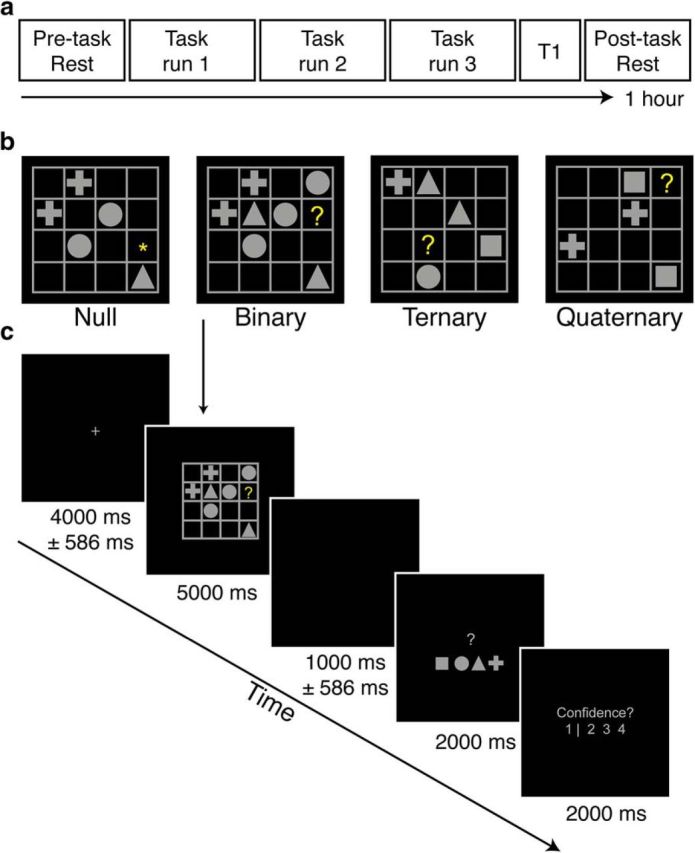Figure 1.

Experimental design and sequence of displays in a typical trial of the LST. a, fMRI session outline. Participants completed resting-state scans before and after three runs of task imaging. b, Examples of each reasoning complexity condition. The correct answers are square, cross, and cross, respectively, for the Binary, Ternary, and Quaternary problems illustrated. c, Example trial sequence. Each trial contained a jittered fixation period, followed by an LST item, a second jittered fixation period, a response screen, and a confidence rating scale. In Null trials, the motor response screen had one geometric shape replaced with an asterisk, representing the correct button to press.
